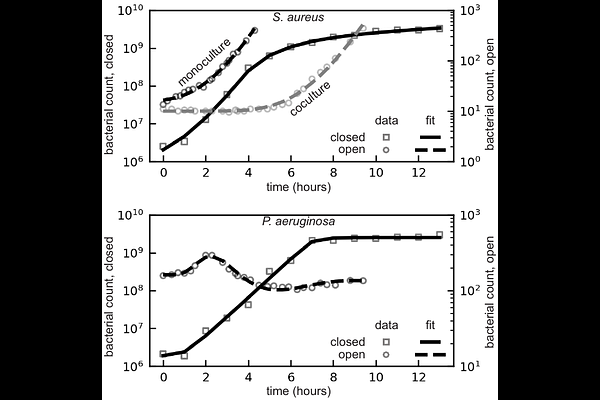A mechanistically-inspired geometric model to predict microbial growth across environments

A mechanistically-inspired geometric model to predict microbial growth across environments
Tunstall, T.; Lapinska, U.; Pagliara, S.; Tsaneva-Atanasova, K.
AbstractEstimating bacterial growth trajectories is essential for bridging mechanistic insights and experimental data. Nevertheless, widely used empirical models tend to be overly simplistic or purely phenomenological. Mechanistic models offer greater detail but still fall short of representing the full spectrum of biochemical processes underlying cellular growth. Here we take a mean-field approach whereby we consider the bacterial cell population as a cascading sequence of biochemical processes. This approach enables the derivation of a geometry-based model of cellular population growth that captures the lag, exponential, and stationary phases observed experimentally, without requiring assumptions about specific cellular mechanisms. Furthermore, parameters estimated from multiple datasets can provide insights into the population\'s history of cellular stress. We demonstrate the robustness and accuracy of the proposed modelling framework by applying it to existing experimental data for S. aureus and P. aeruginosa grown in closed and open environments. We show that our approach achieves higher accuracy compared to contemporary models.